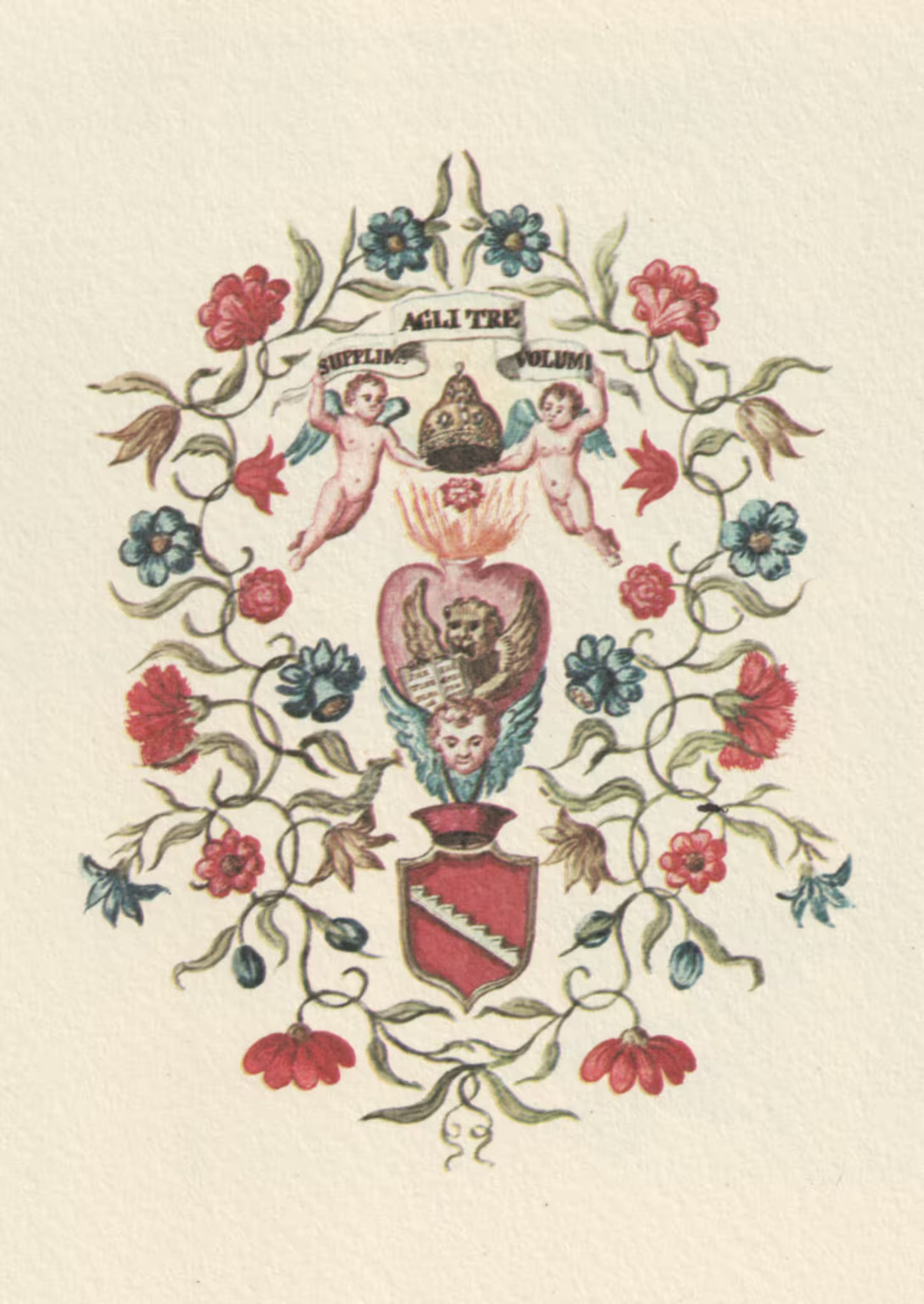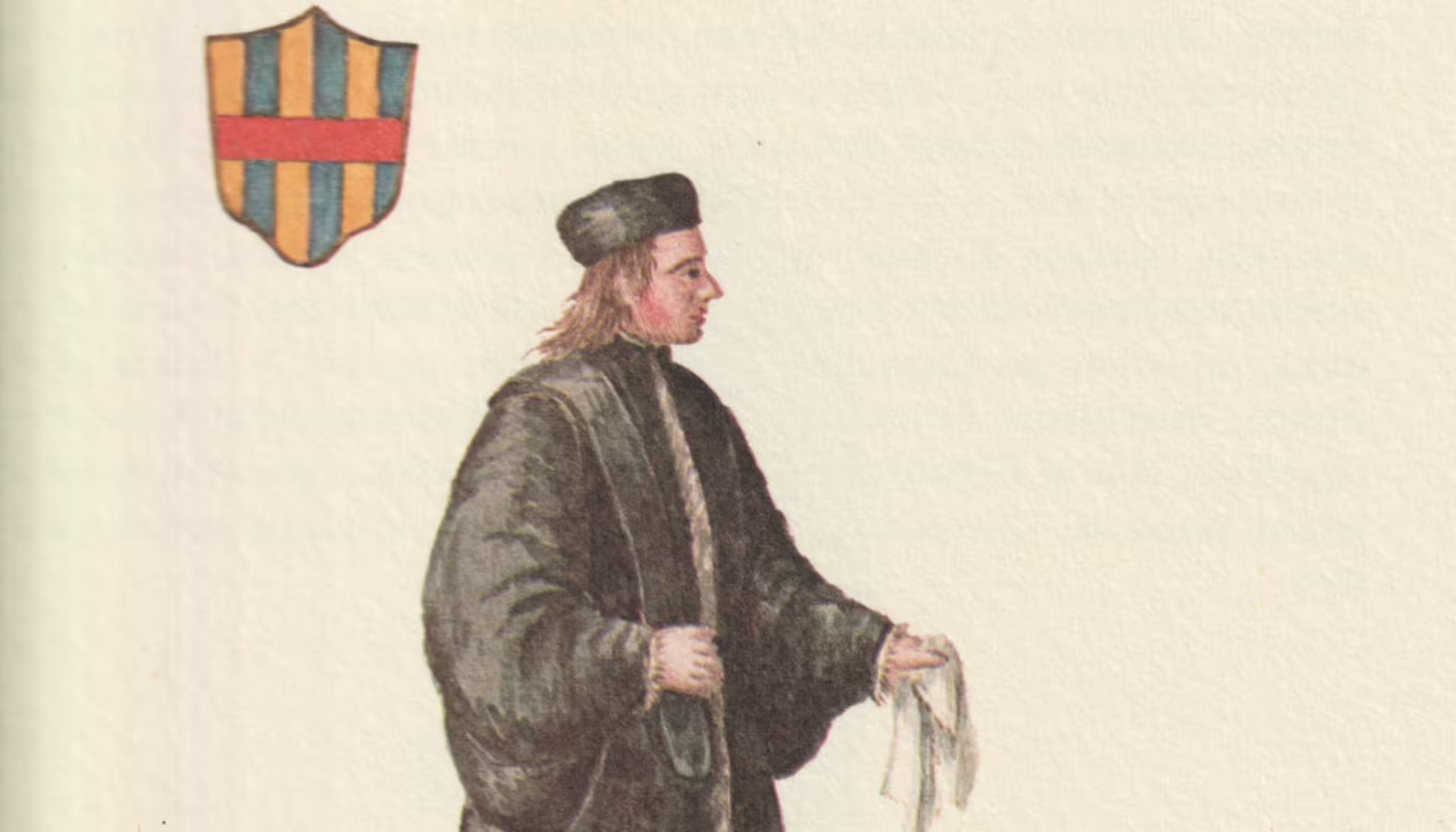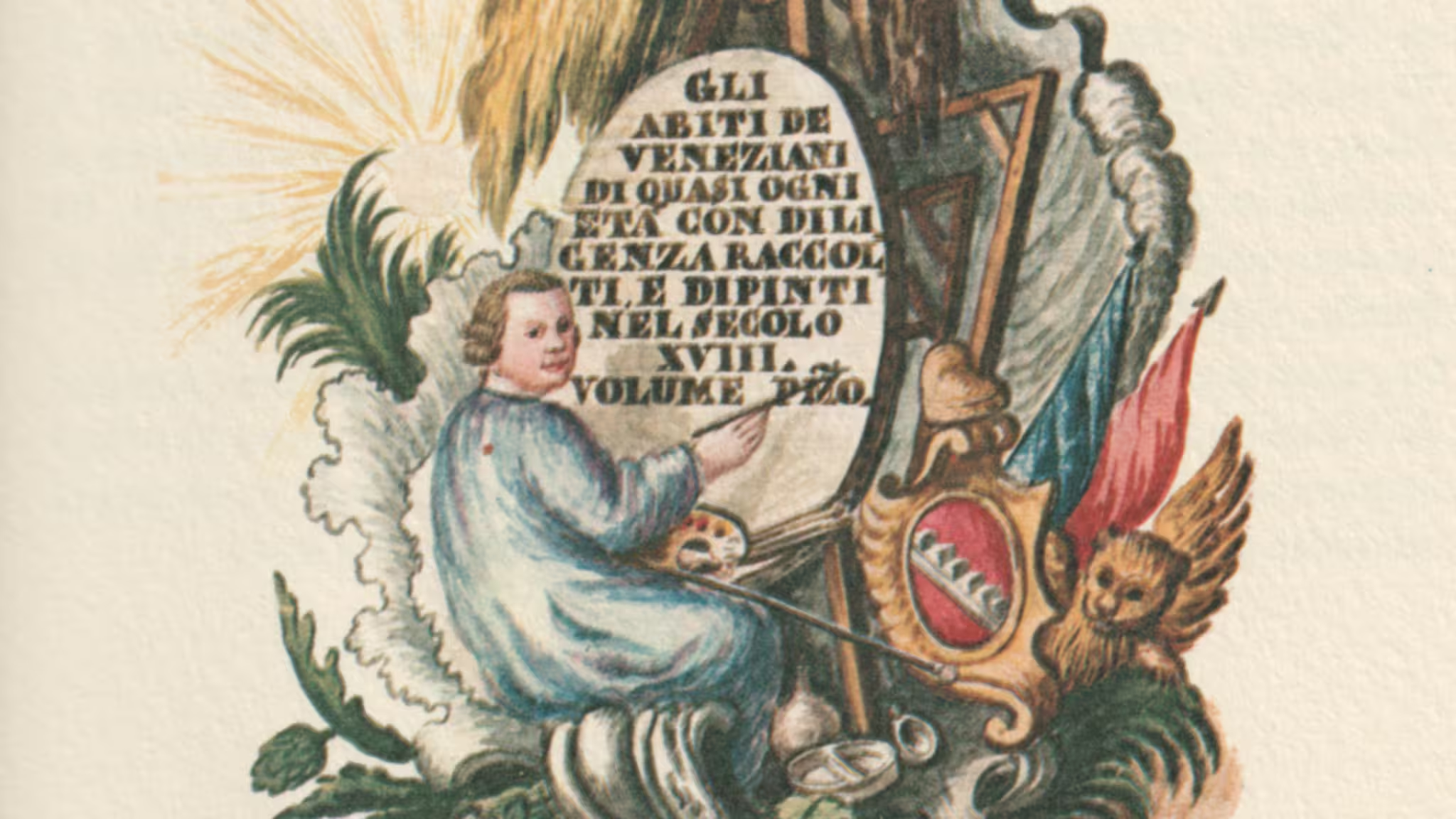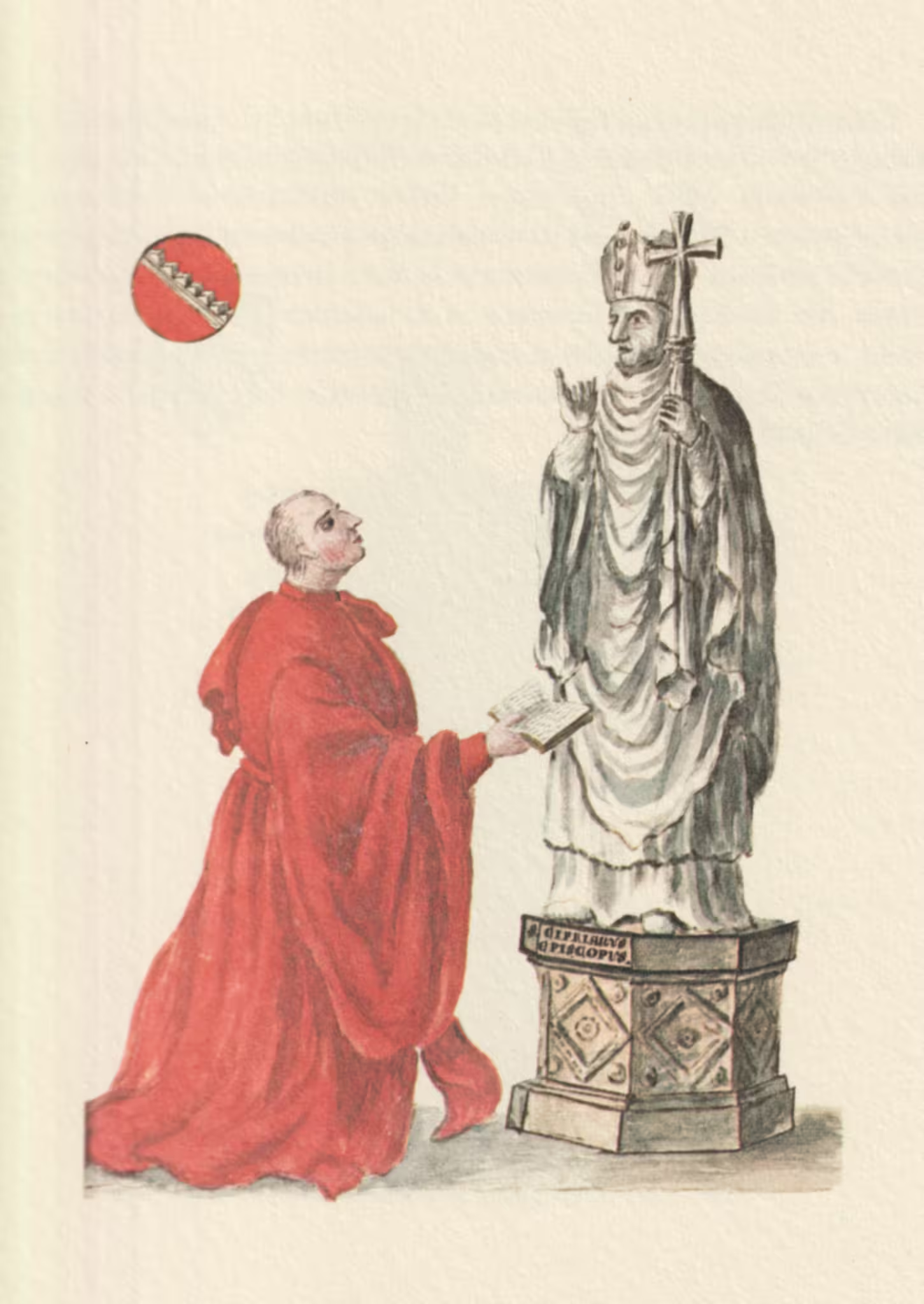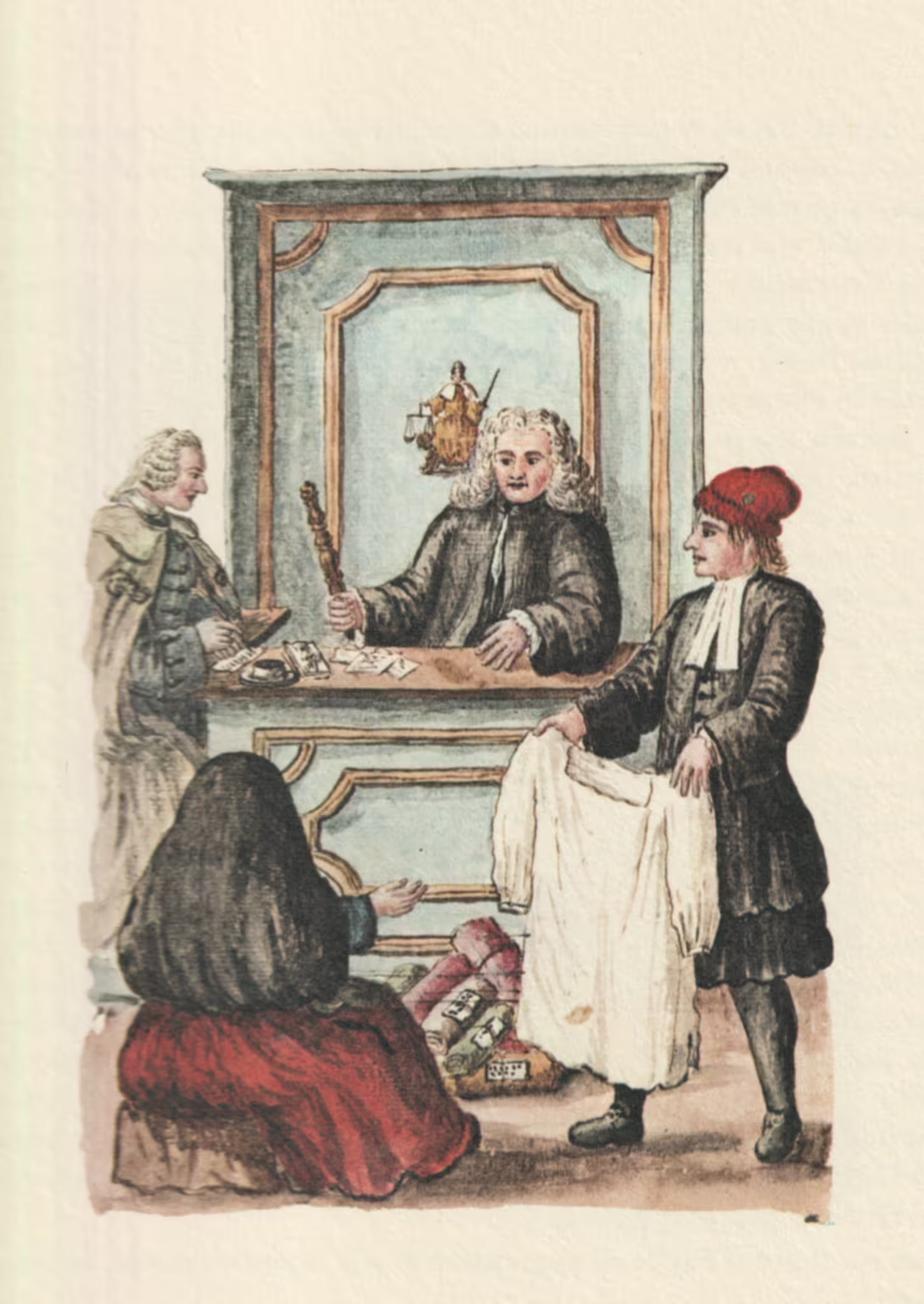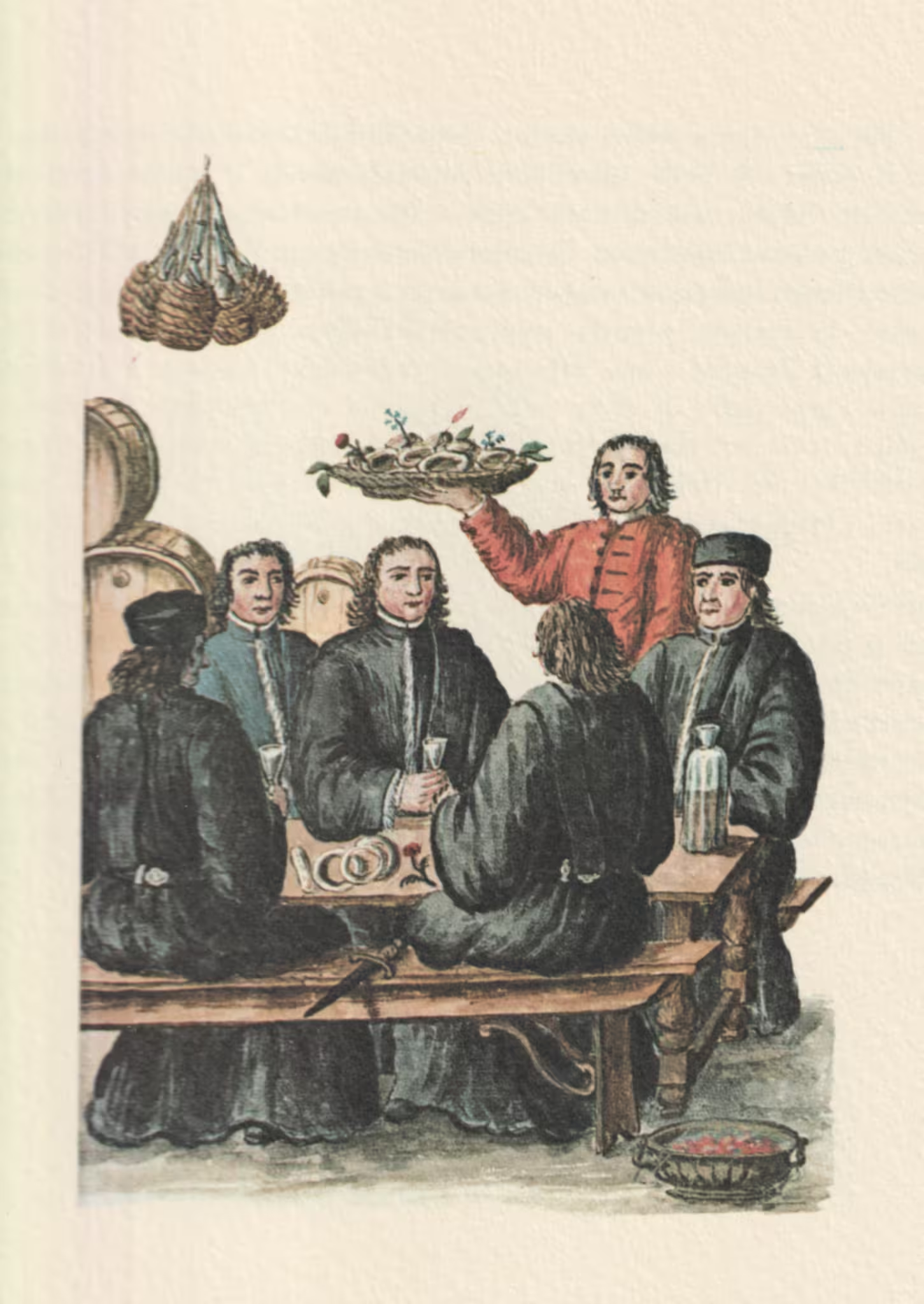Giovanni Grevembroch aka Jan Van Grevenbroeck (artist; 1731-1807)
Giovanni Grevembroch (1731-1807) was a Venetian artist, probably of Dutch descent, who worked for many years for the Venetian nobleman Pietro Gradenigo. His best known work is the Gli Abiti de Veneziani.
-
Procuratore, e Cavaliere — Procurator and Cavalier — Grevembroch 1-18
“Procuratore, e Cavaliere” (Procurator, and Cavalier) from the Gli abiti de veneziani (1754) by Giovanni Grevembroch, translated by René Seindal.
-
Giovane in Dogalina — Young Nobleman in Dogalina — Grevembroch 1-32
“Giovane in Dogalina” (Young Nobleman in Dogalina) from the Gli abiti de veneziani (1754) by Giovanni Grevembroch, translated by René Seindal.
-
Grevembroch cover illustrations
The cover pages of each of the four volumes of Grevembroch’s “Gli abiti de venezianii” are quite intriguing.
-
Nobile della Casa Trivisan — Nobleman of the House of Trivisan — Grevembroch 1-55
“Nobile della Casa Trivisan” (Nobleman of the House of Trivisan) from the Gli abiti de veneziani (1754) by Giovanni Grevembroch, translated by René Seindal.
-
Gli Abiti de Veneziani — Full list
The full list of all the watercolours in the four volumes of “Gli Abiti de Veneziani” by Grevembroch.
-
Giacomo Gradenigo Cavaliere — Grevembroch 1-37
“Giacomo Gradenigo Cavaliere” from the Gli abiti de veneziani (1754) by Giovanni Grevembroch, translated by René Seindal.
-
Nobile sopra l’incanto — Nobleman as Auctioneer — Grevembroch 1-81
“Nobile sopra l’incanto” (Noble as Auctioneer) from the Gli abiti de veneziani (1754) by Giovanni Grevembroch, translated by René Seindal.
-
Compari alla Malvasia — Malvasia Companions — Grevembroch 1-84
“Compari alla Malvasia” (Malvasia Companions) from the Gli abiti de veneziani (1754) by Giovanni Grevembroch, translated by René Seindal.
-
La scopa privilegiata — The privileged broom — Grevembroch 4-57
“La scopa privilegiata” (The privileged broom) from the Gli abiti de veneziani (1754) by Giovanni Grevembroch, translated by René Seindal.
-
Liberalità Misteriosa — Mysterious Liberality — Grevembroch 4-1
“Liberalità Misteriosa” (Mysterious Liberality) from the Gli abiti de veneziani (1754) by Giovanni Grevembroch, translated by René Seindal.



